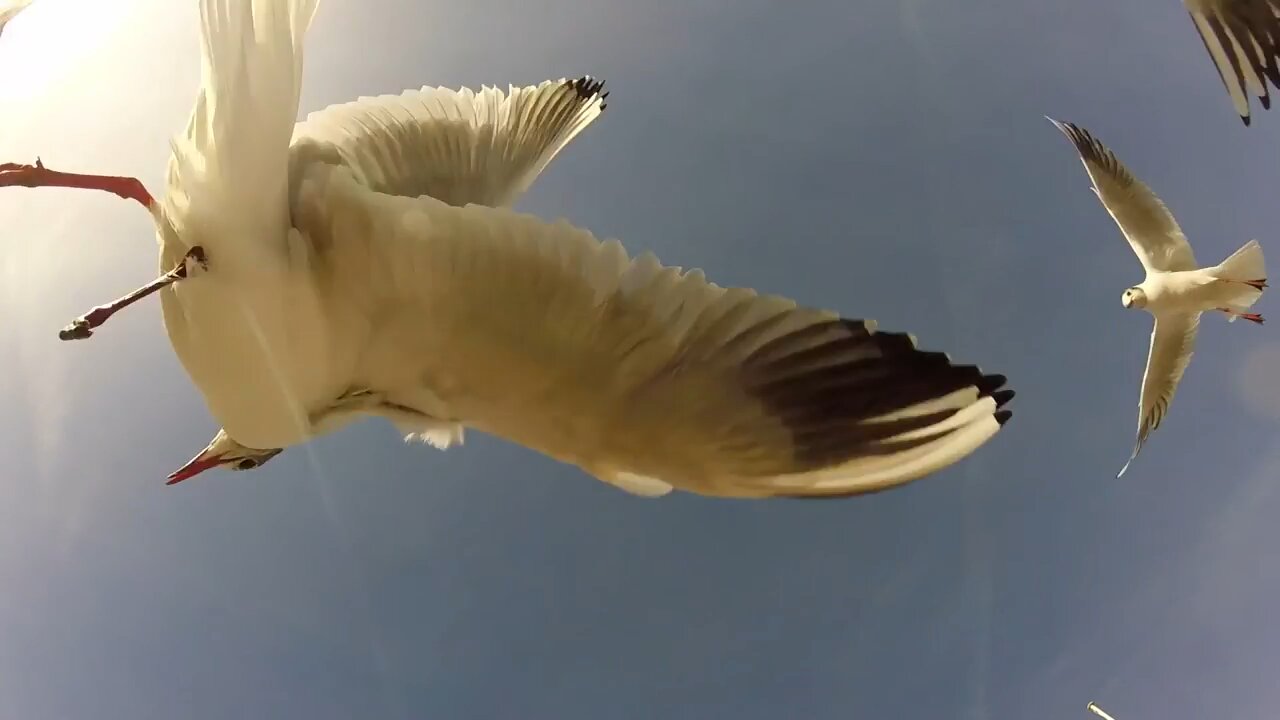Premium Only Content

Chroicocephalus ridibundus Black-Headed Gull In Flight Slow Motion.
The black-headed gull (Chroicocephalus ridibundus) is a small gull that breeds in much of the Palearctic including Europe and also in coastal eastern Canada. Most of the population is migratory and winters further south, but some birds reside in the milder westernmost areas of Europe. Small numbers also occur in northeastern North America, where it was formerly known as the common black-headed gull. As is the case with many gulls, it was previously placed in the genus Larus.
The black-headed gull displays a variety of compelling behaviours and adaptations. Some of these include removing eggshells from the nest after hatching, begging co-ordination between siblings, differences between sexes, conspecific brood parasitism, and extra-pair paternity. They are an overwintering species, found in a variety of different habitats
This gull is 37–44 cm (14+1⁄2–17+1⁄2 in) long with a 94–110 cm (37–43+1⁄2 in) wingspan and weighs 190–400 g (6+3⁄4–14+1⁄8 oz).
In flight, the white leading edge to the wing is a good field mark. The summer adult has a chocolate-brown head (not black, although does look black from a distance), pale grey body, black tips to the primary wing feathers, and red bill and legs. The hood is lost in winter, leaving just two dark spots. Immature birds have a mottled pattern of brown spots over most of the body,[4] and a black band on the tail. There is no difference in plumage between the sexes.[5]
It breeds in colonies in large reed beds or marshes, or on islands in lakes, nesting on the ground.[5] Like most gulls, it is highly gregarious in winter, both when feeding or in evening roosts. It is not a pelagic species and is rarely seen at sea far from coasts.
The black-headed gull is a bold and opportunistic feeder. It eats insects, fish, seeds, worms, scraps, and carrion in towns, or invertebrates in ploughed fields with equal relish.[5] It is a noisy species, especially in colonies, with a familiar "kree-ar" call. Its scientific name means laughing gull.
This species takes two years to reach maturity. First-year birds have a black terminal tail band, more dark areas in the wings, and, in summer, a less fully developed dark hood. Like most gulls, black-headed gulls are long-lived birds, with a maximum age of at least 32.9 years recorded in the wild, in addition to an anecdote now believed of dubious authenticity regarding a 63-year-old bird
-
 1:46:59
1:46:59
Glenn Greenwald
7 hours agoNew Russiagate Disclosures Show Depths of CIA & FBI Guilt; Trump Forcing Universities to Adopt DEI Programs Only for Jewish Students; The "Pogrom" at FSU | SYSTEM UPDATE #496
65.1K48 -
 LIVE
LIVE
FusedAegisTV
22 hours agoOFFICIAL Evo 2025 Day 1 Co-Stream - Las Vegas, NV ∥ 17 TOURNAMENTS!!
272 watching -
 2:10:07
2:10:07
The Illusion of Consensus
3 hours agoDEBATE: Alex Berenson vs Dave Smith on Holocaust, Israel/Gaza
31.5K8 -
 8:07
8:07
MattMorseTV
1 day ago $10.77 earnedTrump just LOWERED PRICES by 75 PERCENT.
62.8K102 -
 51:41
51:41
BonginoReport
11 hours agoParalyzed Woman Blames COVID-19 Jab, Sues Moderna! - Nightly Scroll w/ Hayley Caronia (Ep.103)
121K86 -
 2:08:34
2:08:34
Mally_Mouse
1 day agoFriend Friday!! - Let's Play! - Minecraft
8.21K -
 LIVE
LIVE
Gore TV
2 hours ago💀 STAY DOWN, BRO 🤣 | Vapingamers Needs a Rez… Again 😏
30 watching -
 LIVE
LIVE
AirCondaTv Gaming
4 hours ago $0.09 earnedGolf with Your Friends & Empyrion - These Ball Touches Are Out Of This World (Collab)
25 watching -
 LIVE
LIVE
VapinGamers
2 hours ago $0.07 earnedCommunity Co-Stream Division 2 with GoreTV and BookPrince! - !music !rumbot
16 watching -
 3:16:16
3:16:16
Midnight In The Mountains
5 hours agoGaming w/ PER·SE·VER·ANCE | Friday Night Fortnite | Rumbles Power Couple the Midnights!
10.1K